Have you ever wondered if you can change the colour of your leather sofa?
We explore the possibilities of dyeing a leather sofa, including the types of leather that can be dyed, the different types of dyes that can be used, and the step-by-step process of dyeing a leather sofa.
We will also discuss safety precautions to take, tips for achieving a professional-looking result, and how to maintain the color of a dyed leather sofa.
We will touch on alternatives to dyeing, such as painting or using leather conditioner.
If you’re curious about transforming the look of your leather sofa, keep reading to find out more!

Can You Dye A Leather Sofa?
Dyeing a leather sofa can be a cost-effective way to achieve a complete color change, giving new life to an old or worn-out couch by using specialized leather dye products.
Over time, leather furniture can show signs of wear and tear, losing its original charm and vibrancy. By opting to dye the leather, you not only rejuvenate its appearance but also extend its lifespan. The process allows you to personalize your furniture, giving it a fresh look that complements your evolving style preferences.
One of the key benefits of dyeing leather furniture is the ability to revamp its color without the hefty price tag associated with purchasing new pieces. This cost-effective method is particularly advantageous for those looking to update their living space without breaking the bank.
When considering leather dye products, you’ll find a variety of options on the market, ranging from traditional dyes to more modern solutions that offer quick and efficient results. These products cater to different types of leather and colors, ensuring a seamless transformation for your couch.
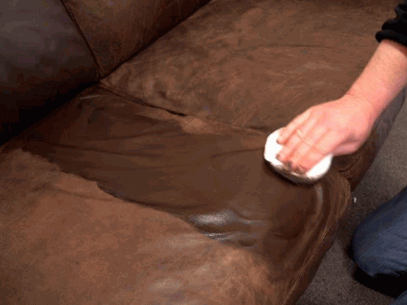
What Types of Leather Can Be Dyed?
Different types of leather, from leather couches and chairs to leather car seats and other leather furniture, can be dyed, but the process and results can vary significantly based on the type of leather and its condition.
What Are the Different Types of Leather?
Leather comes in various types, each with unique characteristics that affect its appearance, durability, and dyeing potential, including new leather, old leather, and different leather surfaces.
Among the most common types of leather are full-grain, top-grain, corrected-grain, and bonded leather. Full-grain leather is revered for its natural look, as it retains the outermost layer of the hide, showcasing the unique markings and imperfections. On the other hand, top-grain leather undergoes sanding and buffing, resulting in a smoother appearance but slightly less durability than full-grain. Corrected-grain leather is buffed and embossed to remove imperfections, while bonded leather is made from leftover scraps, combined with a bonding agent.
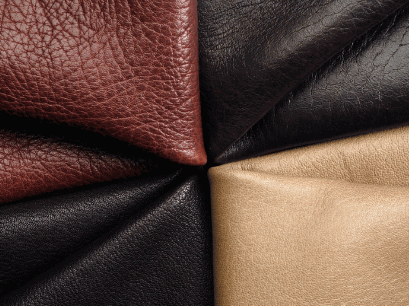
What Types of Dyes Can Be Used on Leather?
Various types of dyes can be used on leather, each offering different benefits and suited for different kinds of leather products, including specialized leather dye products designed for versatility and durability.
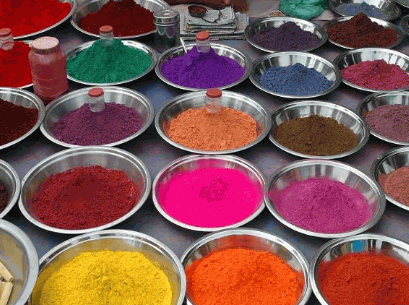
What Are the Differences Between Leather Dyes and Leather Paints?
Leather dyes and leather paints differ in their chemical composition and the way they interact with leather surfaces, with dyes penetrating the leather for a more natural look and paints creating a surface layer that can be tailored for a perfect color match.
Regarding applying leather dyes, the process involves the dye seeping into the pores of the leather, thereby enhancing the natural beauty of the material. In contrast, leather paints act more like a coating that sits on top of the leather, allowing for precise color control and customization.
For those looking to preserve the original texture and characteristics of the leather, dyes would be the preferred choice as they do not alter the feel of the material. On the other hand, paints are ideal for individuals seeking to create intricate patterns, detailed designs, or vibrant colors that stand out.
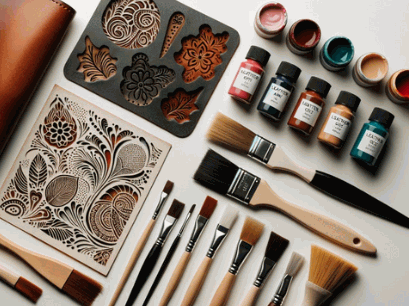
How to Prepare a Leather Sofa for Dyeing?
Preparing a leather sofa for dyeing involves a thorough cleaning and prepping process to ensure the dye adheres properly, which includes using products like a leather cleaner, leather deglaze, and leather primer, as recommended by experts like Leather Care Technician Mallika Sharma.
What Materials Do You Need to Prepare a Leather Sofa?
To prepare a leather sofa for dyeing, you will need materials such as a leather cleaner, leather deglaze, leather primer, and gloves to protect your hands, along with guidance from a leather care technician.
Along with these essential materials, it’s important to gather other necessary items for the process. Have some soft, clean cloths or lint-free towels ready to handle the products and wipe the surface. To manage potential spills and protect your work area, plastic sheets or drop cloths can come in handy. You may also need a stir stick or brush for mixing and applying the dye evenly. Keeping a well-ventilated space is crucial for a smooth dyeing experience, so ensure proper airflow in the room where you plan to work.
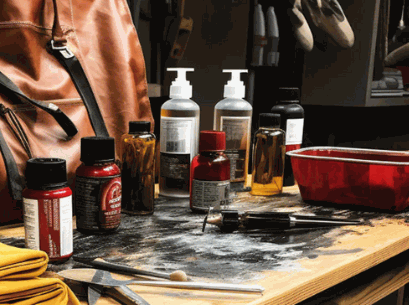
How to Dye a Leather Sofa?
Dyeing a leather sofa involves a systematic leather dyeing process that includes applying a thin coat of dye evenly across the entire couch to achieve a perfect dye color and a professional finish.
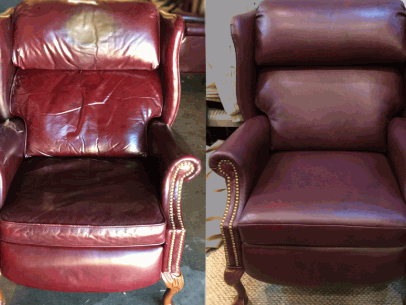
What are the steps for Dying a leather sofa?
The steps for dyeing a leather sofa include applying a base coat of dye, following the manufacturer’s instructions carefully, and repeating the process with multiple coats until the desired color is achieved.
Before starting the dyeing process, it is essential to prepare the leather surface properly. Clean the sofa thoroughly with a mild leather cleaner and allow it to dry completely. Once the surface is clean and dry, mix the leather dye according to the manufacturer’s recommendations, ensuring proper ventilation in the workspace.
When applying the base coat of dye, use a clean sponge or brush to spread a thin, even layer over the leather surface. Make sure to work in small sections to achieve uniform coverage. Allow the base coat to dry completely before applying additional coats.
For each subsequent coat of dye, follow the same application process, ensuring that each layer dries thoroughly before applying the next coat. This step is crucial in achieving a smooth and consistent color finish.

What Are Some Tips for Achieving a Professional-Looking Dye Job?
To achieve a professional-looking dye job on your leather sofa, consider expert advice from professionals like the Leather Colour Doctor, and apply the dye in different directions for the final time to ensure an even and smooth finish.
Applying the dye in various directions is crucial to avoid streaks and inconsistencies in the color. By doing so, you ensure that the dye penetrates evenly into the leather, resulting in a more uniform appearance. Not only that but using high-quality leather dye products is essential for a successful outcome. These products contain better pigments that adhere well to the leather, offering a rich and long-lasting color.
Experts in leather care recommend finishing the dyeing process with care and precision. This involves checking for any missed spots or uneven areas, and touching them up if needed. It’s also vital to let the dye dry completely before using any leather conditioning products to seal in the color and protect the leather from future damage.
Take a look: How To Dye Leather Shoes At Home
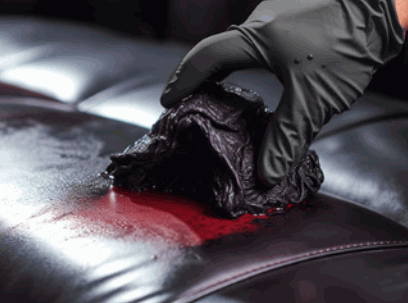
Are There Any Safety Precautions to Take When Dyeing a Leather Sofa?
When dyeing a leather sofa, it is crucial to take safety precautions, such as wearing gloves to protect your skin, following the leather dyeing process guidelines, and consulting with a leather care technician for additional safety tips.
Proper ventilation is also essential during the dyeing process to prevent inhalation of harmful fumes. Experts recommend working in a well-ventilated area or using a respirator mask if necessary. It is important to handle chemicals safely, storing them in a secure place away from children and pets.
Handling dye solutions and other chemicals can pose various hazards, such as skin irritation, respiratory issues, or even fire risks due to flammable substances. It is crucial to read and follow the manufacturer’s instructions carefully, as well as to have emergency measures in place in case of accidental exposure or spills.
Can You Dye a Leather Sofa Without Professional Help?
Yes, you can dye a leather sofa without professional help by using a comprehensive leather repair kit, following reader-approved methods, and using the best dye available while strictly adhering to the instructions provided.
DIY leather dyeing has become increasingly popular among home decor enthusiasts and those looking to revamp their furniture on a budget. By investing in a quality leather repair kit, individuals can easily tackle color fading, stains, or scratches on their leather sofas. Step-by-step guides provided with these kits make the process user-friendly, allowing even beginners to achieve professional-looking results.
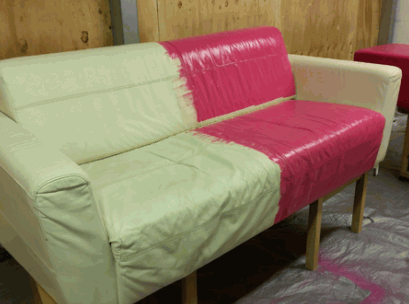
How Do You Maintain the Color of a Dyed Leather Sofa?
Maintaining the color of a dyed leather sofa involves regular cleaning with a leather cleaner, applying a leather finisher to protect the color, and ensuring the entire piece maintains a consistent matte finish and perfect color match over time.
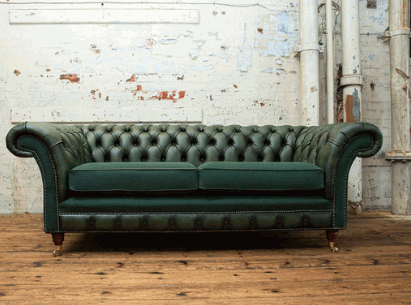
What Are Some Tips for Maintaining the Color of a Dyed Leather Sofa?
To maintain the color of your dyed leather sofa, regularly use a leather cleaner to remove excess dye and dirt, and apply a leather finisher in small amounts to protect and preserve the color.
Gentle cleaning is crucial when it comes to preserving the luster of your leather sofa. Avoid using harsh chemicals that can strip the dye and natural oils from the leather. Opt for a specialized leather cleaner that is gentle yet effective in removing dirt and grime without damaging the surface.
Applying protective finishes after cleaning is another essential step in leather maintenance. A high-quality leather finisher acts as a barrier against spills, stains, and UV rays, helping to extend the lifespan of your sofa’s color.
Regular routine care is key to keeping your dyed leather sofa looking vibrant and fresh. Make it a habit to dust and lightly clean the sofa on a weekly basis to prevent dirt buildup and maintain its sheen.
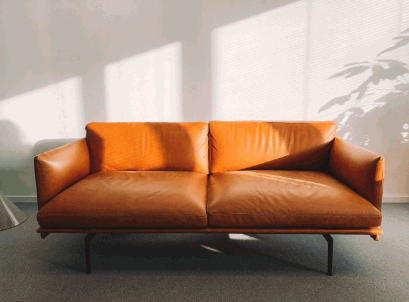
What Are the Alternatives to Dyeing a Leather Sofa?
Alternatives to dyeing a leather sofa include using leather paint for a vibrant, customized look, applying leather conditioner to enhance the natural color, or opting for leather repair services to restore and rejuvenate your leather gear.
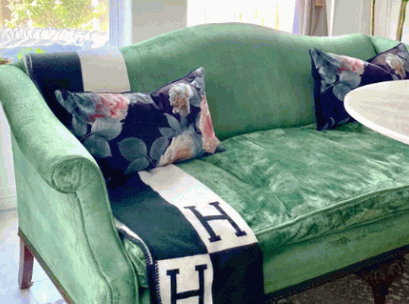
Can You Paint a Leather Sofa Instead of Dyeing It?
Painting a leather sofa is a viable alternative to dyeing, allowing for creative freedom and vibrant colors by applying leather paint in different directions to ensure even coverage and a matte finish.
Before beginning the painting process, it is crucial to prepare the leather surface properly. This involves cleaning the leather thoroughly to remove dirt, oils, and any previous finishes. Once the surface is clean and dry, you can start applying the leather paint using a soft brush or sponge.
Leather paint offers several advantages for customization and artistic expression. It allows you to create intricate designs, patterns, and textures on your leather sofa, giving it a unique and personalized look.
Achieving an even, long-lasting finish is key to the success of the painting project. To ensure durability, consider applying multiple thin coats of paint, allowing each layer to dry completely before adding the next. This technique helps prevent cracking and peeling, ensuring a professional-looking result that will stand the test of time.
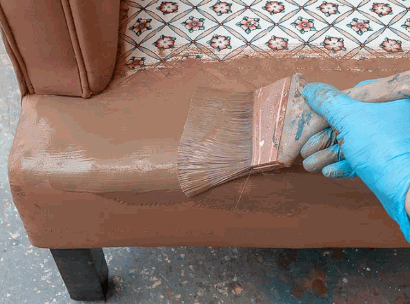
Can You Use Leather Conditioner to Change the Color of a Leather Sofa?
While leather conditioner is primarily used to nourish and protect leather, it may enhance the existing color of a leather sofa, giving it a refreshed, brand-new appearance, but it cannot completely change the color.
The leather conditioner works by restoring the natural oils that can dry out over time, helping to maintain the suppleness and durability of the leather.
Regular application of leather conditioner can prevent cracking and peeling, extending the lifespan of your leather furniture.
It also acts as a barrier against moisture and stains, providing an added layer of protection to keep your sofa looking its best for years to come.







